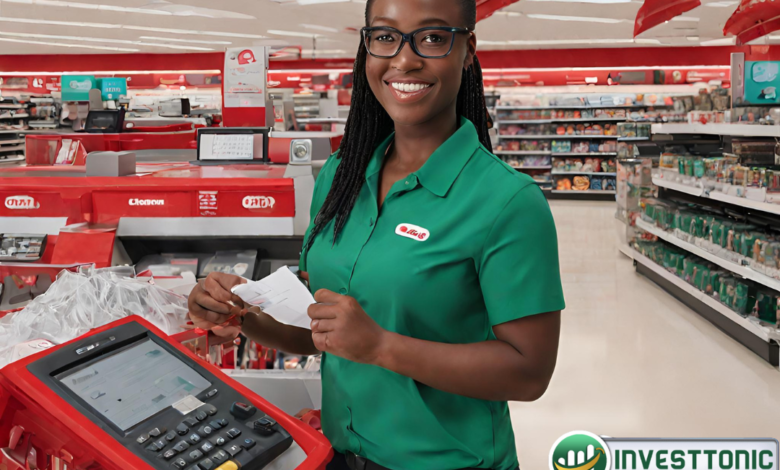
In today’s fast-paced digital landscape, retail stores face a multitude of challenges that impact their operations, customer experience, and profitability. As competition increases and consumer expectations evolve, overcoming these obstacles becomes crucial for survival. This is where Information Technology (IT) control steps in, offering solutions that streamline processes, enhance customer engagement, and drive growth. But what exactly are the key challenges in retail stores, and how can IT control address them? Let’s explore.
The Growing Complexity of Retail Operations
Retail operations are becoming more complex with the rise of e-commerce, omnichannel shopping, and changing consumer behavior. Retailers must now balance physical stores, online platforms, and supply chains that span the globe. This complexity brings new obstacles that require innovative solutions, especially in the realm of IT.
Obstacle 1: Inventory Management Issues
Impact of Poor Inventory Management on Retail
One of the most common challenges retailers face is inventory management. Stocking too much or too little of a product can lead to either wasted resources or missed sales. Poor inventory control can result in lost revenue, unhappy customers, and increased operational costs.
How IT Solutions Can Help Manage Inventory
IT control systems, such as inventory management software, provide real-time tracking of stock levels, sales trends, and supply chain movements. These solutions can automate restocking, predict demand, and reduce human error, ensuring that retailers always have the right amount of inventory on hand.
Obstacle 2: Inconsistent Customer Experience
The Importance of Consistency Across Channels
In today’s retail environment, customers expect a seamless experience whether they are shopping in-store, online, or via a mobile app. Inconsistent experiences across these channels can frustrate customers and damage a retailer’s reputation.
Role of IT in Creating Omnichannel Experiences
By integrating IT systems across different platforms, retailers can create a unified shopping experience. Customer relationship management (CRM) software can sync data from all channels, ensuring that customer information, purchase history, and preferences are available at every touchpoint. This helps retailers provide personalized service, whether the customer is in-store or online.
Obstacle 3: Security Threats and Data Breaches
Why Security is a Top Concern in Retail
Retailers handle a vast amount of sensitive customer data, including payment information and personal details. This makes them prime targets for cyberattacks. Data breaches not only harm a retailer’s reputation but also lead to significant financial losses.
IT Control Measures to Strengthen Security
Retailers can use IT controls like encryption, firewalls, and multi-factor authentication to secure customer data. Regular system audits and updates ensure that security measures stay current, reducing the risk of breaches. Additionally, IT systems can monitor transactions for suspicious activity in real time, allowing for quick responses to potential threats.
Obstacle 4: Payment Processing Inefficiencies
How Payment Delays and Errors Affect Retailers
Slow or error-prone payment processing can lead to customer dissatisfaction and lost sales. Whether it’s long checkout lines or declined transactions, inefficient payment systems are a major obstacle for retail stores.
Streamlining Payment Systems with IT Solutions
With IT solutions like integrated point-of-sale (POS) systems, retailers can speed up payment processing, reduce errors, and offer multiple payment options, including mobile wallets and contactless payments. These systems also generate real-time data that helps retailers understand sales trends and manage cash flow more effectively.
Obstacle 5: Supply Chain Disruptions
The Consequences of Supply Chain Breakdowns
Disruptions in the supply chain can lead to product shortages, delays, and increased costs. These issues are especially problematic for retailers who rely on just-in-time inventory systems, where any delay can ripple through the entire operation.
Leveraging IT for Real-Time Supply Chain Management
IT control systems enable real-time tracking of goods as they move through the supply chain. Retailers can use these systems to anticipate potential delays, optimize shipping routes, and adjust inventory levels accordingly. This reduces the impact of supply chain disruptions and ensures products are available when customers need them.
Obstacle 6: Poor Employee Productivity
Factors Contributing to Low Productivity in Retail
Retail staff often juggle multiple tasks, from stocking shelves to assisting customers. Inefficient workflows, outdated tools, and lack of training can contribute to low productivity, resulting in longer wait times and a less enjoyable shopping experience.
How IT Can Boost Employee Efficiency
Retailers can implement IT solutions like task management software, mobile devices for in-store employees, and self-checkout systems to free up staff for more critical tasks. Training programs delivered through IT platforms also ensure employees are well-equipped to use new technologies, improving both efficiency and job satisfaction.
Obstacle 7: Lack of Personalization in Marketing
The Need for Tailored Customer Engagement
Modern consumers expect personalized marketing that caters to their specific needs and preferences. Generic advertising campaigns are less effective and can even alienate potential customers.
IT-Driven Personalization Strategies for Retailers
Through data analytics and AI-powered marketing tools, retailers can gather insights into customer behavior and tailor their marketing efforts accordingly. These IT solutions enable personalized email campaigns, product recommendations, and targeted promotions that increase customer loyalty and drive sales.
Obstacle 8: Outdated Legacy Systems
The Risks of Relying on Old Technology
Many retailers continue to use legacy systems that are outdated and difficult to maintain. These systems are not only inefficient but also prone to security vulnerabilities and integration issues with modern technologies.
Transitioning to Modern IT Systems
Retailers should invest in upgrading to cloud-based platforms that are scalable, secure, and easily integrated with other systems. This transition can improve operational efficiency, reduce downtime, and allow retailers to adapt quickly to changes in the market.
Obstacle 9: Inefficient Customer Data Management
Challenges of Handling Large Data Sets
Retailers generate massive amounts of data, from customer purchases to online browsing habits. Without proper systems in place, managing this data can be overwhelming and lead to missed opportunities for growth.
IT Solutions for Effective Data Management
IT systems, such as customer data platforms (CDPs), organize and analyze large sets of customer data. These platforms provide insights that help retailers improve their marketing strategies, inventory management, and customer service.
Obstacle 10: Rising Operational Costs
Factors Driving Up Costs in Retail
The cost of labor, rent, utilities, and supplies continues to rise, putting pressure on retailers to find ways to cut expenses without sacrificing quality or customer service.
How Automation and IT Can Reduce Expenses
Automation tools, such as robotic process automation (RPA) and AI-powered chatbots, can reduce the need for manual labor and streamline operations. These IT solutions help retailers save time and money by automating routine tasks, such as restocking, payroll, and customer service.
The Role of IT Control in Enhancing Decision-Making
Ultimately, IT control systems provide retailers with the data and tools they need to make informed decisions. From sales trends to customer behavior, IT solutions offer valuable insights that help retailers optimize their operations, improve customer satisfaction, and drive long-term success.
Conclusion
The retail industry faces numerous challenges, but IT control offers a range of solutions to overcome them. Whether it’s managing inventory, securing customer data, or improving employee productivity, IT control systems are key to enhancing efficiency and staying competitive in a rapidly evolving marketplace.




